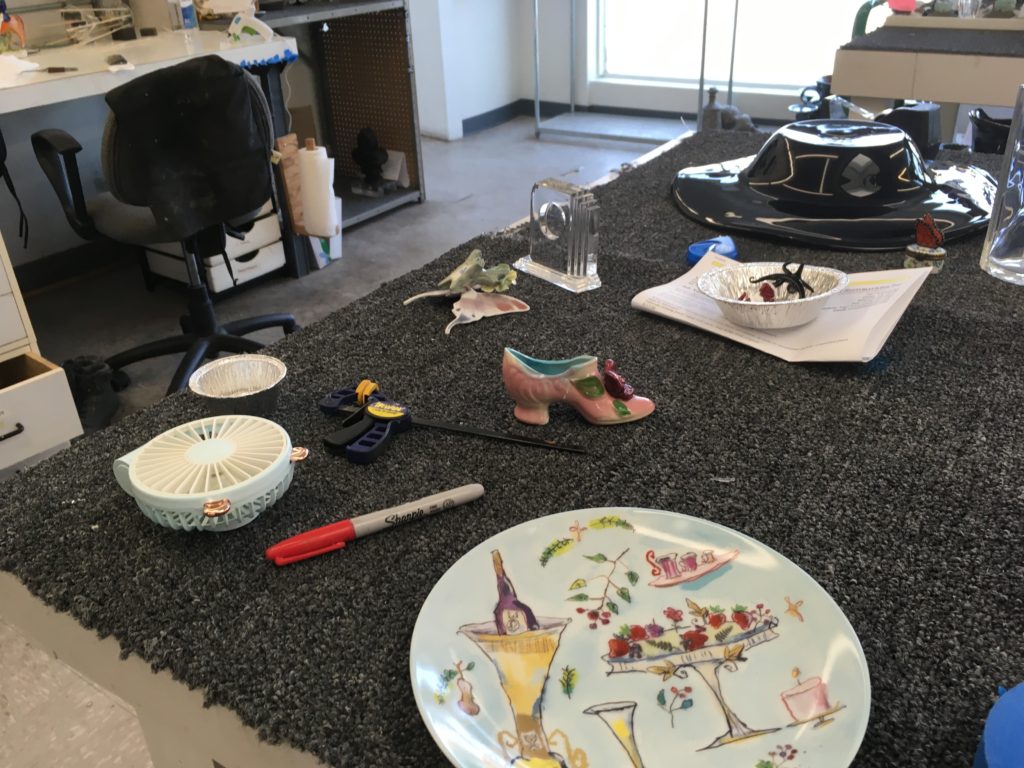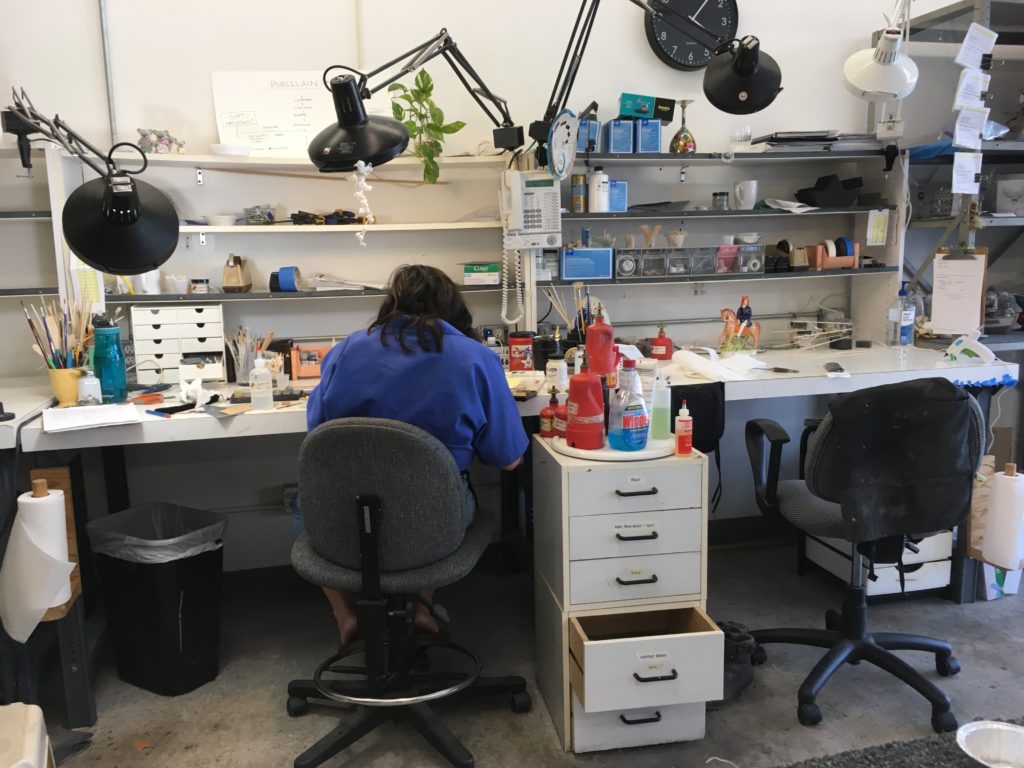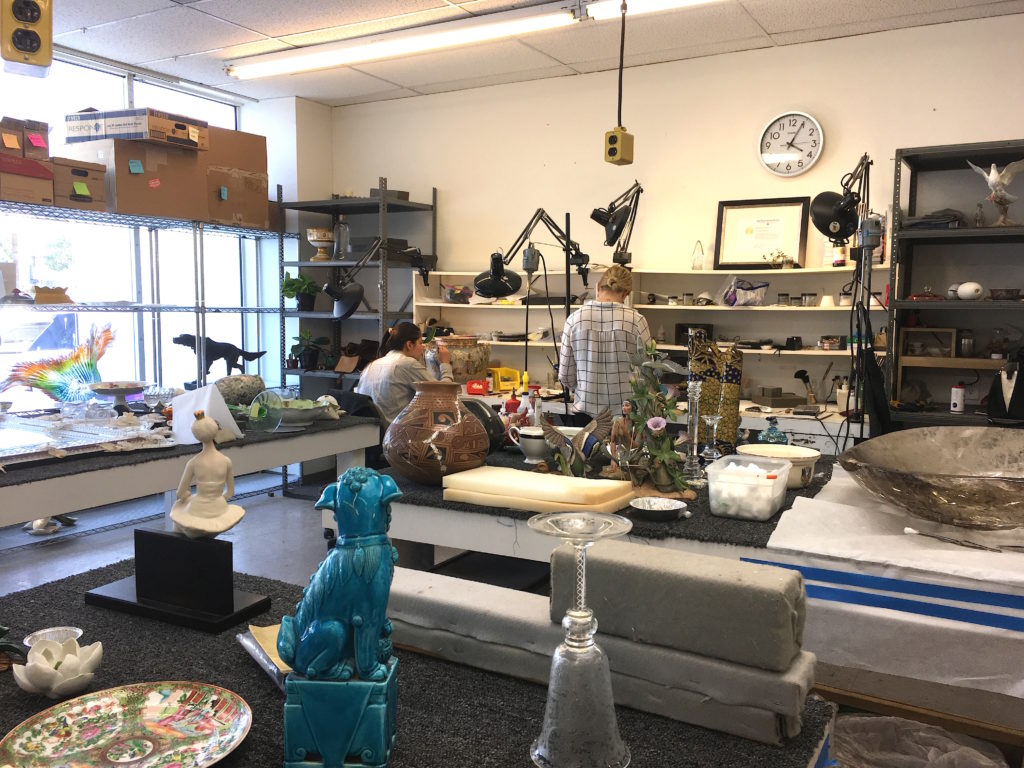by Alisa Nascimento
On October 4, 2019 the Texas Chapter Interns took a field trip to Art Restorations Inc., a local art conservation facility in Dallas, to get a close look into the world of art restoration. Due to the nature of the Patrons of the Arts in the Vatican Museums, it seemed appropriate that we take a glimpse at the kind of work the Patrons support.
Art Restorations Inc., generously provided the interns with a tour of their facilities, which included areas for pottery and ceramics, glass, painting, sculpture, and furniture. The small team of conservators work on multiple projects simultaneously, keeping busy on one restoration as another project sets and so on. Cher Goodson, director of Art Restorations Inc., shared with us the basics of art conservation, as well as the dedication this craft requires. Many of the conservators at work were apprentices who must spend two years on the bench in order to learn the beginning principles. After five years of experience, apprentices gain professional associate standing. Finally, senior conservators like Ms. Goodson are recognized after ten years of full time experience.
Ms. Goodson explained the difference between conservation and restoration, though the terms are often used interchangeably: to conserve is to preserve what exists, while to restore means to complete what is lost. Both methods are used at Art Restorations Inc., yet not all clients require both.
After watching the conservators and examining the variety of items they had to work on, ranging from objects of sentimental value to novelty lamps to enormous decorative mirrors, we were able to understand the importance of conservation work, not only for museum quality art but also for the everyday. The art conservators often dedicate their time between multiple artworks, and can spend up to thirty hours for a single project.

While it may seem like conservation entails sitting over a broken item for hours on end, art conservation is fascinating in its combination of chemistry and studio knowledge. Those more science inclined can opt to perform research oriented work, while those who enjoy the physical aspect can work directly with the art.


As if the art conservation puzzles weren’t difficult enough, Ms. Goodson expressed a problem with modern art, which she felt “was not made to last.” With the contemporary use of photography and degradable materials, the lifespan of newer art has declined significantly compared to antiques which exist to this day as heirlooms. She revealed to us a rather large shadow box frame in which corn husks were the main medium for the image. Such loose and easily worn material makes conservation nearly impossible. Of the items that Art Restorations Inc., does not accept are clocks and textiles, the latter for lack of space and equipment and the former requires periodic rewinding.
Art conservation exemplifies creative problem solving and requires an attention to detail that few can maintain. The demand for people in this industry doesn’t appear to be slowing, as individuals and institutions will constantly have a need for conservators as long as art remains affected by time.

No comments yet.